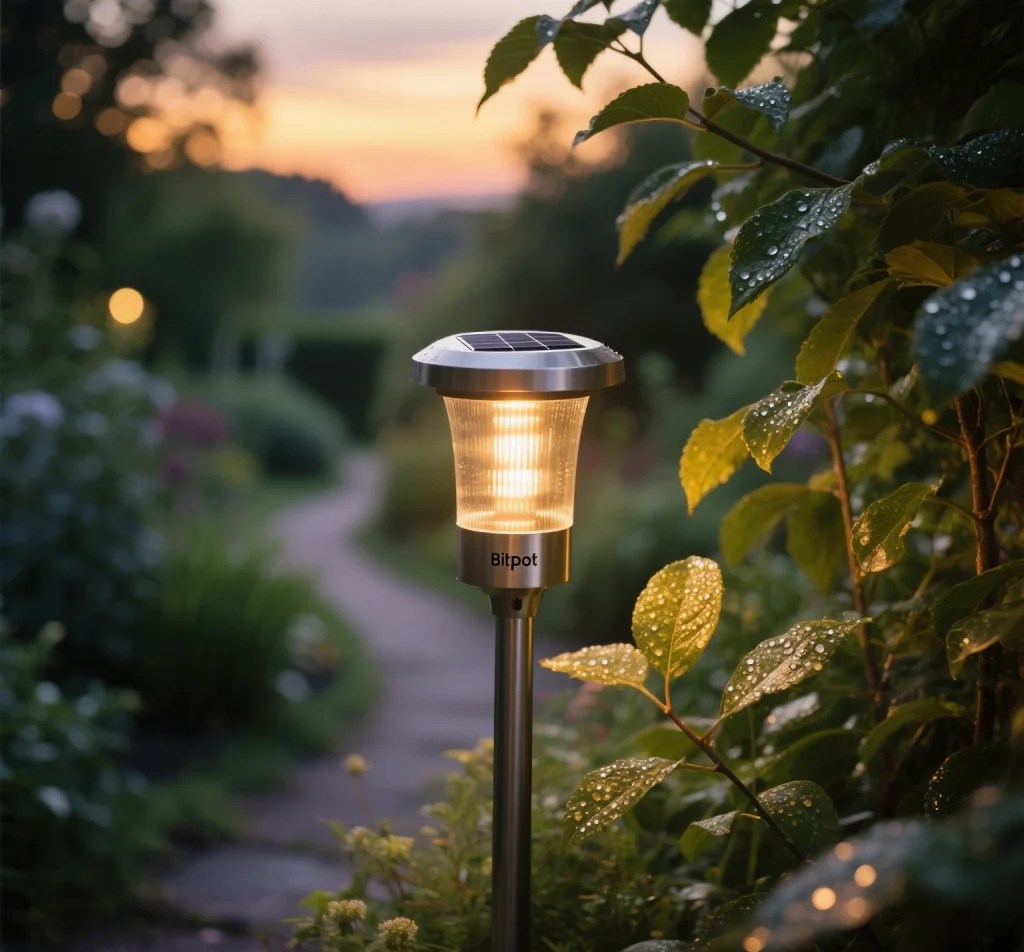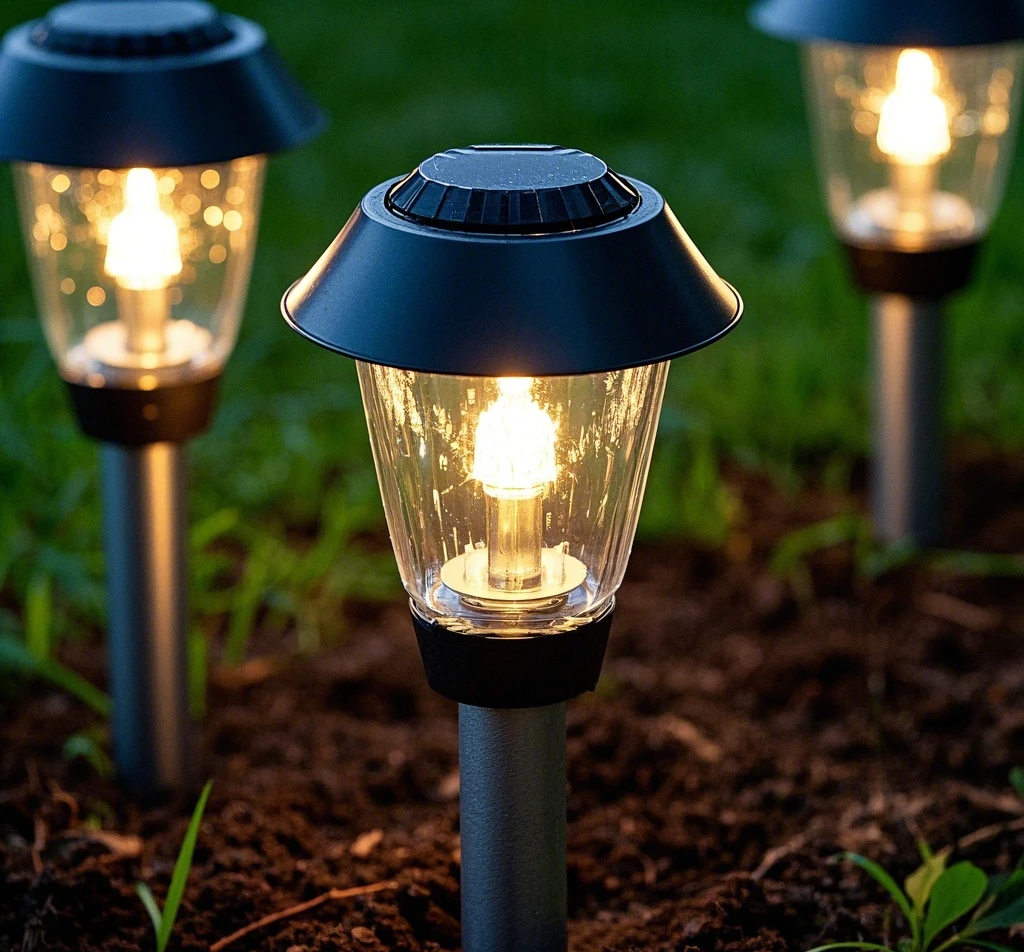Solar flood lighting has become a go-to choice for eco-conscious homeowners seeking bright outdoor illumination without the high costs of traditional wiring. However, Quora users often question whether solar security lights can rival the consistent brightness of wired flood lights, especially in challenging conditions like shaded areas or cloudy days. With modern advancements, models like the InnoGear Solar Flood Light (2600 lumens, 182 LEDs) offer impressive performance. This article compares solar flood lights to their wired counterparts, highlights user feedback on reliability, and provides practical tips to maximize charging efficiency in low-sunlight environments, ensuring all-night brightness and enhanced nighttime safety.

The Brightness Question: Solar vs. Wired
Brightness, measured in lumens, is the cornerstone of effective outdoor lighting. Wired flood lights, powered by a constant electrical supply, deliver reliable illumination ranging from 1000 to 8000 lumens for residential use. Solar flood lights, such as the InnoGear 182 LED model with 2600 lumens, rely on solar energy and battery storage, prompting skepticism about their ability to match wired performance. Quora users frequently ask if solar security lights can maintain bright outdoor illumination for driveways, patios, or backyards, particularly during overcast weather. By examining technology, user experiences, and optimization strategies, we can assess how solar flood lighting stacks up.
Technical Comparison: Solar vs. Wired Flood Lights
To evaluate whether solar flood lights can compete with wired flood lights, let’s compare their core attributes:
- Power Source: Wired flood lights draw continuous power from the grid, ensuring unwavering brightness. Solar flood lights use solar panels to charge lithium-ion batteries (e.g., 2400 mAh in InnoGear), with performance tied to sunlight availability.
- Brightness: Wired flood lights, like the Leonlite LED Flood Light (3000 lumens), provide consistent output for large areas. The InnoGear 182 LED Solar Flood Light (2600 lumens) offers comparable brightness for smaller spaces like patios or entryways.
- Installation: Solar flood lights excel in easy installation, requiring no wiring. InnoGear’s wall or stake mounting takes minutes, while wired flood lights often need electrician services, costing $150-$400.
- Operating Costs: Solar flood lighting eliminates electricity bills, offering long-term cost savings. Wired flood lights can add $10-$25 monthly for high-lumen models, though LED versions reduce this cost.
- Weather Dependence: Solar security lights may dim in cloudy or shaded conditions, while wired flood lights remain unaffected. Advanced solar panels, like InnoGear’s monocrystalline design, mitigate this issue.
Quora users note that solar flood lights are closing the brightness gap for residential needs, with many appreciating their affordability and ease of setup.
Spotlight on InnoGear 182 LED Solar Flood Light (2600 Lumens)
The InnoGear 182 LED Solar Flood Light is a leading choice for solar flood lighting, offering:
- Brightness: 2600 lumens with 182 LEDs, delivering bright security glow for driveways, gardens, or fences. Its 270-degree coverage ensures wide illumination.
- Motion Sensor: Detects movement up to 33 feet, with three modes: motion-activated, constant low light, or dim-to-bright. Users report reliable activation, though some mention occasional sensitivity to wind.
- Durability: IP67 waterproof rating ensures weatherproof durability, outperforming many competitors in rain, snow, or heat.
- Battery and Panel: A 2400 mAh lithium-ion battery and monocrystalline solar panel provide 8-12 hours of all-night brightness after 6-8 hours of direct sunlight.
- Installation: Easy installation via wall screws or ground stakes, with a detachable solar panel for flexible placement.
Amazon and Quora users praise InnoGear for its near-wired brightness, with one reviewer noting, “It lights up my backyard like a wired light, and I didn’t need an electrician.” However, some report reduced runtime in shaded areas, underscoring the need to maximize charging efficiency.
Wired Flood Lights: The Gold Standard
Wired flood lights, such as the Sansi LED Security Flood Light (3600 lumens), set a high bar for bright outdoor illumination:
- Brightness: Outputs of 2000-10,000 lumens cater to diverse needs, from patios to parking lots. The Sansi’s 3600 lumens ensure intense, consistent light.
- Customization: Features like adjustable color temperatures (3000K-6000K) and timers offer tailored performance, unlike most solar flood lights.
- Durability: IP66 ratings provide weatherproof durability, though exposed wiring may require maintenance.
- Installation: Professional wiring increases costs and complexity, with installation fees often exceeding $200.
Reddit users value wired flood lights for their reliability in high-traffic areas, but many cite high energy costs and installation hassles as drawbacks, making solar security lights appealing for smaller setups.
User Feedback on Performance
- Solar Flood Lights: Quora and Amazon reviews highlight the InnoGear’s bright security glow, with users noting it rivals wired lights for driveways or patios. A Quora user stated, “My InnoGear lights are bright enough to spot raccoons 30 feet away.” However, some report dimming after cloudy days, emphasizing proper panel placement. The motion sensor reliability is generally strong, though occasional false triggers occur in stormy weather.
- Wired Flood Lights: Users praise their consistent brightness, with one Reddit commenter noting, “My Sansi wired floodlight never dims, even in blizzards.” Drawbacks include high upfront costs and energy bills, with one user estimating $20/month for two 3000-lumen lights.
Solar flood lights are deemed sufficient for most residential applications, while wired flood lights are preferred for larger, high-visibility areas.
Maximizing Charging Efficiency in Shaded Areas
To ensure solar flood lights maintain all-night brightness in shaded or cloudy conditions, follow these tips to maximize charging efficiency:
- Use Detachable Solar Panels: InnoGear’s separate solar panel (with a 16-foot cable) allows placement in sunny areas, like rooftops, while mounting lights in shaded spots, such as under trees. Quora users report up to 40% better charging with this setup.
- Ensure 6-8 Hours of Direct Sunlight: Position solar panels in unshaded areas, facing south in the Northern Hemisphere. Avoid obstructions like buildings or foliage.
- Opt for Monocrystalline Panels: InnoGear’s monocrystalline solar panel is 20% more efficient than polycrystalline panels, capturing more sunlight on overcast days.
- Clean Panels Regularly: Dust or snow can reduce charging by 25-30%. Clean solar panels every 3-6 months with a damp cloth.
- Backup USB Charging: Some solar flood lights, like InnoGear’s upgraded models, support USB charging for cloudy days, ensuring all-night brightness.
- Seasonal Tilting: Adjust solar panels in winter to capture low-angle sunlight, boosting charging efficiency by 10-15%.
These strategies, widely recommended on Quora, help solar security lights perform reliably in low-sunlight environments, rivaling wired flood lights.
Enhancing Motion Sensor Reliability
Motion sensor reliability is crucial for solar flood lights. To optimize performance:
- Calibrate Sensitivity: Set sensors to detect movement within 20-33 feet, reducing false triggers from wind or animals. InnoGear’s adjustable settings allow fine-tuning.
- Strategic Placement: Mount lights 6-10 feet high, facing high-traffic areas like driveways, to ensure consistent activation.
- Regular Testing: Walk within the sensor range at night to verify responsiveness, adjusting angles if needed.
- Clean Sensors: Dust or debris can impair detection. Wipe sensors monthly to maintain motion sensor reliability.
These steps ensure solar security lights deliver bright security glow when needed, enhancing nighttime safety.
Installation and Maintenance
Solar flood lights shine in easy installation, requiring no wiring. To set up InnoGear lights:
- Select Locations: Choose areas needing outdoor security lighting, ensuring solar panels get 6-8 hours of direct sunlight.
- Mount Lights: Use wall screws or stakes for easy installation. Position separate solar panels in sunny areas.
- Adjust Angles: Tilt light heads for optimal coverage and panels for sunlight capture.
- Test Performance: Confirm motion sensors and brightness at dusk.
Maintenance involves cleaning solar panels quarterly and replacing batteries every 1-2 years, ensuring weatherproof durability (IP67 for InnoGear).
Cost and Environmental Benefits
Solar flood lighting offers long-term cost savings, with no electricity costs compared to wired flood lights, which may add $15-$30 monthly for high-lumen models. The InnoGear ($35-$45 for a 2-pack) is a one-time investment with minimal upkeep. By using solar energy, solar flood lights reduce carbon emissions, appealing to eco-conscious users. Wired flood lights, while efficient with LEDs, rely on grid power, which may not be sustainable.

Addressing Quora Concerns
Quora users question solar flood lights’ brightness and reliability:
- Brightness: InnoGear’s 2600 lumens match mid-range wired flood lights (2000-3000 lumens) for residential use, though high-end wired models (5000+ lumens) are brighter.
- Cloudy Weather: Maximizing charging efficiency with separate solar panels and monocrystalline technology mitigates dimming, as confirmed by user reviews.
- Durability: IP67 ratings ensure weatherproof durability, with InnoGear lasting 2-3 years in harsh conditions.
These solutions make solar flood lights a viable alternative for most homes.
Conclusion
Solar flood lighting, like the InnoGear 182 LED Solar Flood Light (2600 lumens), can closely match wired flood lights in bright outdoor illumination for driveways, patios, and backyards. While wired flood lights offer superior brightness for large areas, solar security lights provide comparable performance with easy installation, long-term cost savings, and motion sensor reliability. By using separate solar panels, cleaning panels regularly, and ensuring 6-8 hours of direct sunlight, you can maximize charging efficiency for all-night brightness, even in shaded areas. For homeowners seeking sustainable, cost-effective nighttime safety, solar flood lights are a powerful contender that rivals wired alternatives.


Leave a Reply